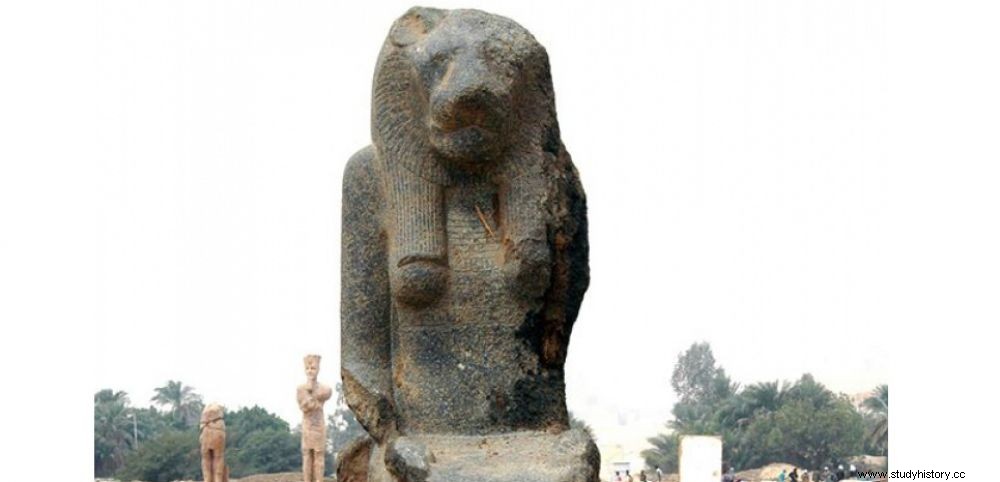 Ancient statue of the goddess Sekhmet discovered in Luxor (Thebes) in the temple of "millions of years" of 'Amenhotep III.
Ancient statue of the goddess Sekhmet discovered in Luxor (Thebes) in the temple of "millions of years" of 'Amenhotep III. It is said that from their mouths came the wind of the desert... Eight 3400-year-old statues of the powerful Egyptian deity Sekhmet, have been unearthed in the "temple of Millions of Years" of Pharaoh Amenhotep III (Amenophis, in Greek), the largest funerary temple of ancient Egypt, located near the Valley of the Kings, in Thebes (Luxor). According to the Egyptian Ministry of Antiquities, researchers found these black granite statues during excavations led by German archaeologist of Armenian origin, Hourig Sourouzian. Six of these sculptures were seated on a throne, carrying in the right hand the symbol of life ânkh , an ansate cross, the others were incomplete or damaged. Of this extraordinary royal temple, which we know stretched at the foot of the Theban mountain over 700 m long and 500 m wide, we would not even mention the location if two gigantic effigies of the pharaoh had not crossed the millennia… The two colossi of Memnon, which protected the entrance, to which are added the gigantic 18 m high statues found in the 2000s by Hourig Sourouzian (see Sciences et Avenir n° 817> ).
The warrior goddess Sekhmet personified the destructive power of the Sun

Statue of Sekhmet (1370 BC) exhibited in a museum in Berlin (Germany)
Credit:Altes Museum Berlin
Represented with a woman's body molded in a long skirt, surmounted by a lion's head, Sekhmet, the warrior goddess personified the destructive power of the Sun, instrument of vengeance of the god Re, the solar disk creator of the universe. In addition to these statues, the "Colossi of Memnon" team, which has been working to conserve the Temple of Amenhotep III for more than fifteen years, has also unearthed the central part of a large royal statue carved from black granite. . It shows Amenhotep III standing.
Since the beginning of the work, nearly 108 statues of Sekhmet have been found in the precincts of the temple of Amenhotep III. They represent one of the largest series of sculptures ever unearthed in Egypt. Arranged around a peristyle that has since disappeared, the lion-headed deities at the time protected the statue of the god-pharaoh located in the holy of holies of this extraordinary sanctuary, which is the only one accessible to priests.
Amenhotep III was the ninth pharaoh of the 18 th dynasty. Father of Akhenaten and grandfather of Tutankhamun, his long reign of forty years (1391-1353 BC) was one of the most prosperous periods of ancient Egypt. One of the most refined too, the architecture then experiencing a golden age.
